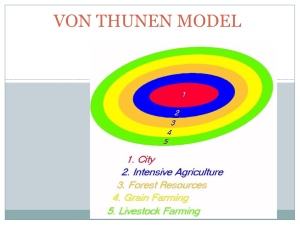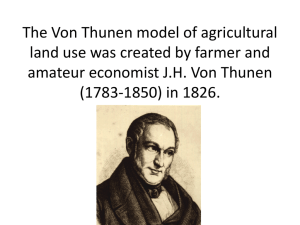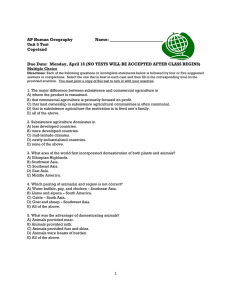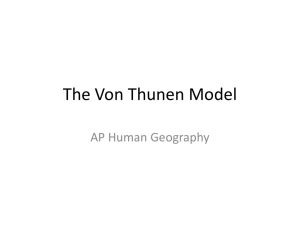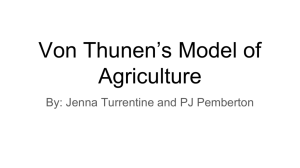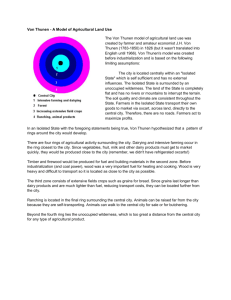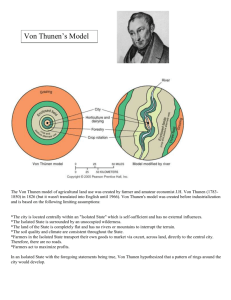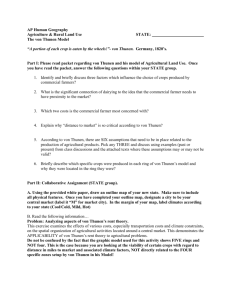Von Thunen
advertisement
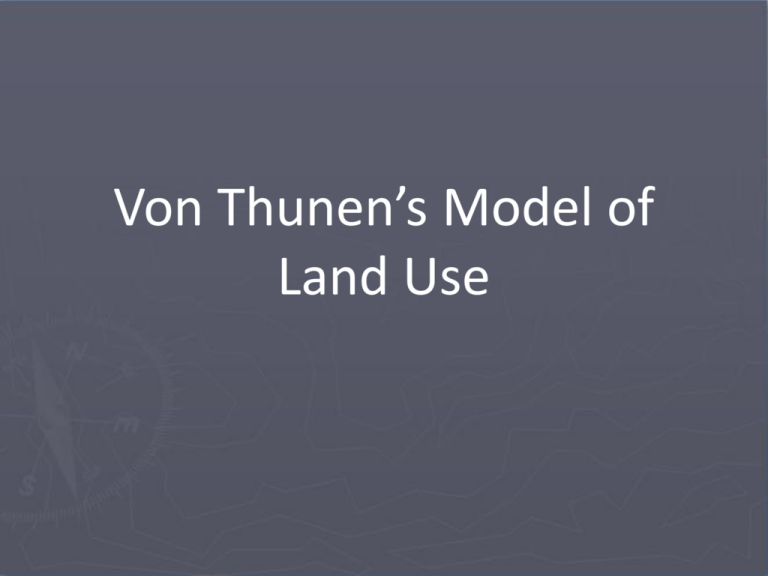
Von Thunen’s Model of Land Use Background • Model made based off observations in 1826 by J.H Von Thunen • Von Thunen based observations off patterns in where agriculture is grown and where people live. • This model explains the development of agricultural towns and cities. Assumptions of Von Thunen • The city is located centrally within an "Isolated State" which is self sufficient and has no external influences. • The Isolated State is surrounded by an unoccupied wilderness. • The land of the State is completely flat and has no rivers or mountains to interrupt the terrain. • The soil quality and climate are consistent throughout the State. • Farmers in the Isolated State transport their own goods to market via oxcart, across land, directly to the central city. Therefore, there are no roads. • Farmers act to maximize profits. The Model Layer 1: Urban Center/Market • At the heart of the model is the city, where the people live and work. • Primarily where agricultural products are brought to be sold Layer 2: Horticulture and Dairy Farming • Horticulture is primarily the growing of fruits, vegetables, and flowers. • Dairy farming is done close enough to transport milk to market without spoiling. Layer 3: Forestry • Ring of trees to provide building materials and firewood – Model produced before widespread use of coal • Located close for easy transportation Layer 4: Grains/Field Crops • Large scale farms that allow for Grain production and large herds of animals – Grains much lighter and easier to transport Layer 5: Extensive Ranching and Grazing • Large open areas where animals can freely roam • Transportation a nonfactor since animals are self-transporting and can walk to market or easily be moved Von Thunen’s Modified Model Uses of Von Thunen’s Model • Von Thunen model useful generalizing agriculture patterns – Opens up discussion to merits and changes in agriculture – Displays connection of city and agricultural patterns • Displays balance between land costs and transportation costs Von Thunen Theory (A) vs. Reality (B)

